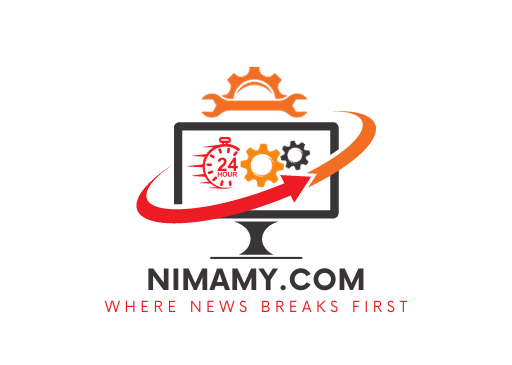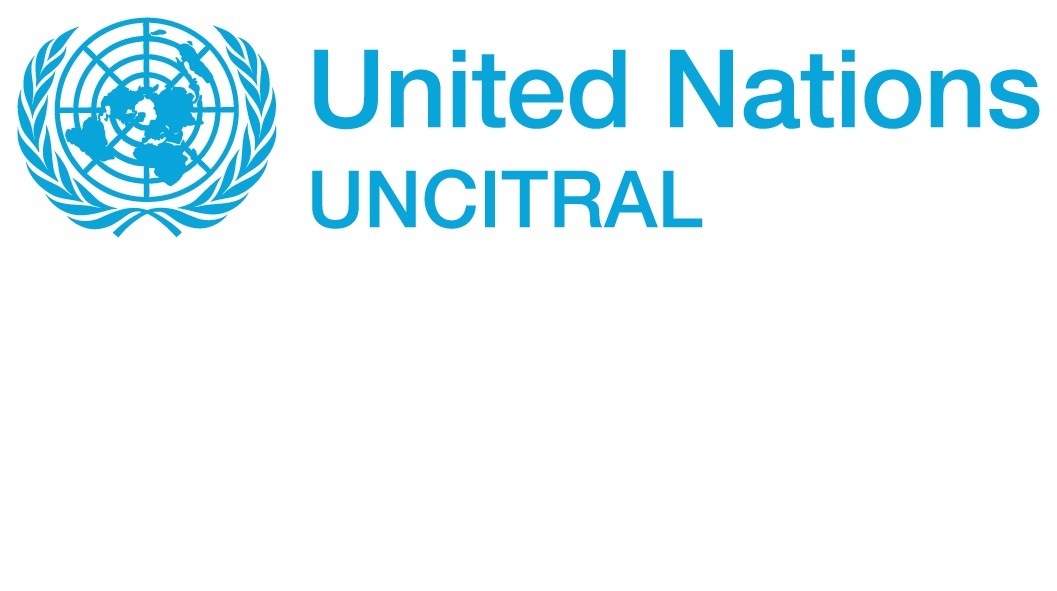This article has been written by Grace Paully pursuing Diploma in Labour, Employment and Industrial Laws for HR Managers and edited by Shashwat Kaushik.
This article has been published by Sneha Mahawar.
The business world is a race track where businesses are constantly competing to gain a larger market share, to achieve a global presence and to provide services and products to overpower competition in their sector. Some organisations are bullish on speeding ahead as a lone rider, while a few believe in mergers and acquisitions. Having said that, let’s understand how this impacts the internal ecosystem of organisations and how to cope with the situation through employee engagement. Yes, you read it right. Employee engagement can be the key and plays a pivotal role in facilitating a smooth transition, avoiding the tremors as the tectonic plates of the organisational merger or acquisition.
M&A is one of the most aggressive change agents in the business economy: volatile and disruptive. The volume of deals and their dollar value grew explosively over the past 30 years. The total value of mergers and acquisitions for 2022 rose to $3.4 trillion US dollars. There has been a drop as a result of COVID, but things are looking up again.
“M&A” stands for “mergers and acquisitions.” The French have a good word for “merger”: fusion, indicating the formation of a new structure by the fusion of two separate ones. “Newco” designates the new firm that emerges from a merger or acquisition. An “acquisition,” on the other hand, is simply a purchase.
A merger is a mutual decision between two companies to fuse or unite to form a new legal organisation. It is a win-win situation for both binding organisations, which rises from reduced costs and increased profits. The five major types of mergers are conglomerate, congeneric, market extension, horizontal, and vertical.
The acquisition, unlike a merger, involves one company actively purchasing another company as a takeover and does not involve a voluntary or mutual decision. This can be achieved with or without the assent of the target company. The firm buys more than 50% of the target company’s shares, called stock sales or other valuable assets, called asset sales.
The acquisitions can either be “private acquisitions” or “public acquisitions,” depending on the sector the acquiring company belongs to on the public stock market.
For example, when the TATA group took over (through acquisition by TATA) Air India and continued its operations. Another example can be when Vodafone and Idea joined (Merger) as Vi India to form one company.
Source: The Economic Times
The aim is to attain impactful economies of scale and get a grip on the share market. Companies may study the current and rising trends and wish to explore product diversification or improve the service line. Mergers and acquisitions can also be just for geographic expansion by laying footprints in a new landscape. This does not limit the value of M&A. Joint ventures, cross-border M&A and management buy-outs are also corporate intents that are often observed.Both mergers and acquisitions have a common goal of increased shareholder value, revenues and growth in the long term.
Vodafone-Idea merger in India was valued at approximately $23 billion, the merger aimed to combine the market reach and resources of Vodafone India and Idea Cellular. In a landmark move, retail giant Walmart acquired a majority stake in Flipkart, one of India’s leading e-commerce companies. With a valuation of $16 billion, the acquisition marked Walmart’s entry into the Indian market. (Source: The Financial Express)
Financier Worldwide states that 80% of mergers fail due to cultural incompatibility.
“The reason why many M&A transactions fail is predominantly because there is no or very little interest in the process,” contends Finn Majlergaard, Chief Executive of Gugin.“But companies can pay a high price if they ignore cultural integration,” he continues. “Key people leave, customers flee and employee satisfaction plummets.” The sad thing is that all this can be avoided if, from the beginning, companies acknowledge the need for cultural integration and realise that it is not their core competence to facilitate such integration.”
Yes, it has been true in cases of some major mergers.
Let’s discuss a bit about corporate culture
Cultures in organisations may be tight ones with precision and value for consistency and routine. There is no place for rebellious behaviour, and the rules are strict. As a large organisation, this may be truly beneficial to maintain order and decorum.
Adhocracy (ad hoc + bureaucracy) cultures tend to encourage innovation and flexibility. People in adhocracy cultures prefer visionary, collaborative leaders: and tech giants such as Facebook, Apple and Google adopt this culture.
Whereas, hierarchy culture is prevalent in the US. The roles and responsibilities are structured and well-defined. There is less scope for fast-paced innovations and amendments, unlike adhocracy. This culture calls for stable operations with clarity in every member’s roles and responsibilities.
Let’s take one such vivacious example to understand what happens if two such organisations, one with an adhocracy culture and the other with a hierarchy culture, merge.
Amazon’s acquisition of Whole Foods’ Mackey
Amazon acquired Whole Foods in 2017 for $13.7 billion. Did it work? For obvious reasons, it did not. Amazon’s hierarchy culture and Whole Foods’s adhocracy culture did not cause sales to rise and eventually led to the failure and closure of 68 stores, including Amazon Books, 4 Star and Pop-Up.
“When you have the kind of culture clash that I imagined John Mackey and Amazon had, it’s really impressive that John stayed around in a leadership position as long as he did,” said Jason Goldberg, chief commerce strategy officer at advertising firm Publicis. “It surprised me.”
The USD 37 billion merger of Daimler Benz with Chrysler was diametrically different. In less than 10 years of the acquisition, Daimler Benz had sold Chrysler for a mere USD 7 billion. The corporate culture clash was the main reason for failure.
Adidas acquired Reebok
In 2005, Adidas acquired Reebok for an estimated value of USD 3.78 billion. In just a year, Adidas’ sales revenue shot up by 52 percent, the largest in the previous eight years. A seamless cultural blend, despite individual divergence, was a key reason for this success. The German Adidas personified core sports, while the American Reebok spelled lifestyle. Yet the cultural aspects of both people and business merged with ease in strategy, execution and integration.
Culture is the backbone and framework for growth in a corporate setting, whether it be a startup or a multinational company. Client relations, service, innovation, and brand expansion are all directly proportional to the culture of the organisation. The performance of the team members and their collaborative efforts will add value to the client and the organisation itself. The culture defines the matrix and thus plays a critical role in scaling the organization’s aim to grow through mergers and acquisitions.
To begin, the managerial leaders must assess whether the teams share a similar work-life pattern or whether they are willing to embrace the change.
In close coordination with the CEO, the HR Department must determine whether the merging of the individual corporate cultures goes along with the dynamics of the existing scenario, future potentials, and opportunities.
Attrition and issues with talent retention
A report from EY indicates alarming data about employee attrition during M&A.
According to its report, Quote: EY research reveals that 47% of key employees leave after a major transaction. Within three years, that number has grown to 75% of the key employees leaving the organisations post M&A.
According to the 18th edition of the EY Global Capital Confidence Barometer, 67% of executives surveyed identified talent as the primary driver of acquisitions, so managerial leaders must undertake all measures to avoid the attrition rate of the top talent. This will often hamper the very intent of the M&A.
Disorganised and disfunctional teams
Greta Roberts of Harvard Business Review accurately states: The Soft Things that Make Mergers Hard. The soft things here indicate the cultural discrepancies, lack of psychological acknowledgement of interpersonal issues, lack of recognition, and mismatch of teams where the fast-paced are clubbed with the learners yet achievers. The result is a lack of collaboration because of the change in dynamics, which in turn can affect their morale, downgrade the processes and impact client deliverables.
Role disconnect
For the HR department, this could be no less than a nightmare. The sudden and unexpected turbulence in the team of talents will greatly impact the organisational intent to scale. Employees lack motivation due to a non cohesive work culture and environment. This could be a major setback, even for the achievers and the team players. It can induce the stress of underperformance and over-promising. The fear of being compared to new employees will also cause a disconnect.
However, if strategically planned by the managerial leaders by keeping the HR Department in the deal, the M&A could possibly be saved.
Employee concerns and doubts need immediate attention
Several employee concerns during mergers and acquisitions can be addressed by the HR Department.
Employees may wonder about several aspects of their jobs, like
- Job assurances
- A new boss or team
- New company culture
- Compensation or benefit alterations
- Organisational structure and hierarchy
- Talent and skill gaps
- New organisational policies
- Contracts and promotions
- Performance Evaluations
- Permutations and combinations among team members.
The HR Department should be well aware of such scenarios and have the clarity to avoid the fear of a lack of transparency among the team members.
According to Bain & Company, a culture that inspires and spurs performance makes companies 3.7 times more likely to be top performers.
Creating a clear plan and strategy of actions
Strategy and culture are among the primary levers at top leaders’ disposal in their never-ending quest to maintain organisational viability and effectiveness. Strategy offers a formal logic for the company’s goals and orients people around them. Culture expresses goals through values and beliefs and guides activity through shared assumptions and group norms.
January–February 2018 issue of Harvard Business Review.
Talent retention programmes must be designed for the success of M&A. Identify the high performers and talents who are committed and hard to find. They may be team leaders, experts in their field, rare skilled talents and so on. They may be crucial to bringing about stability during the initiation and induction phases of the M&A. This can be understood better as linking talent to value by Mckinsky.
The founder of executive-advisory firm CEO Works and former chief human-resources officer of Unilever, Sandy Ogg, suggests it be called HR Reimagined.
An estimated 70% to 90% of all M&As fail to achieve their anticipated strategic and financial objectives. This rate of failure is often attributed to various HR-related factors, such as incompatible cultures, management styles, poor motivation, loss of key talent, lack of communication, diminished trust and uncertainty of long-term goals.
Any change is uncomfortable at first. Sometimes, it gives rise to an unpleasant feeling of uncertainty, leading to insecurity about certain aspects. Offering precision clarity about the roles and responsibilities and revamped prospects will propel the M&A. The employee needs to know how crucial they are to the success of the M&A. Over-communicate if necessary.
Like in any set-up, in the corporate culture too, there may be rumours that fuel the uncertainty. However, if one effectively debunks these hazardous rumours with generalised town-hall-like meetings, it will calm the tension in the air.
Open communication and setting the right expectations are key to handling this situation for starters.
M&A does not mean that the acquiring company’s team is to fret. They can explore a world of opportunities to grow. There must be constant support to understand these parameters, explaining the importance and pivotal role they play. They will also get an opportunity to massively rise in the scope of their work by getting better training and exposure. Working in a different atmosphere may seem like a challenge at first, but when the company’s goals to benefit the teams on both shores become clear, it will only augment sky-soaring success.
Psychological value is one of the many values that employees look for in an organisation. This refers to whether the employee perceives that the employer will make them feel good, appreciated and recognised and will enhance their self-esteem.
The employees need to understand that they are accepted and valued more than themselves. This will make the workplace a personal mission and not just a job. Open communication and setting the right expectations are key to handling this situation for starters.
M&A does not imply that the team of the purchasing company should be concerned. They can genuinely explore a world of options for growth. There must be consistent support to comprehend these factors, stressing how significant and pivotal they are. They will also have the potential to significantly increase the scope of their employment by receiving improved training and exposure. Working in a foreign environment may appear difficult at first, but as the company’s goals to benefit the teams on both sides become evident, it will only add to the company’s sky-high success.
According to a report by Mercer, 47% of the average proportion of M&A deals that fail are primarily due to not adequately anticipating and addressing people’s risks. The more tightly a brand is linked to various elements of employees’ means –end structures and the more personal relevance it has, the more likely the brand is to be preferred and chosen. Re-establishing clear and strategic goals will be necessary for cultural alignment. Job roles must be redefined, and teams must be organised such that they can collaborate to complete projects on time and with high customer satisfaction. A research article by Lorena Ronda and Carmen Valour suggests that development value: refers to whether the employee perceives that the employer provides recognition, self-worth and confidence, a career-enhancing experience and a springboard to future employment.
Merging teams based on experience and skill set matching will be critical. Too many chefs taint the broth. Talented and promising applicants must be provided adequate opportunities to develop and learn. In this space, they will also be able to bring out the best in the rest of the team. This will demonstrate to employees that the organisation cares about their growth and development, as well as the company’s prospects. This will be a win-win situation.
Employee surveys, turnover rates, absenteeism, productivity, employee behaviour, and satisfaction with benefits are some of the key metrics that can accelerate employee engagement during M&A. The metrics give the HR Department a broad idea of the overall issues and modulate strategies around them. Keep the metrics that recognise the highest performers as the benchmark and maintain the historical graphs. Even having a productive exit interview can help one realise the reasons why the previous employees chose to depart, especially during the M&A. HRs can have a backup plan for forecasts and parallels. Using focus groups, surveys, one-on-one interactions and community-building events will also contribute to arriving at realistic facts and figures.
Mergers and acquisitions have the power to change the business landscape. Be it domestic or cross-border, these have the potential to scale companies rapidly and effectively. However, for its fruitful outcome, employee engagement plays a vital role. Clarifying employee doubts, creating a clear plan and strategy of actions, defining clear roles and responsibilities, explaining how significant their part is, explaining the benefits of collaborative work, planning and executing employee training to adjust to the new atmosphere and bringing in the metrics are a few methods to attain the intent to scale. Be open and flexible with the HR systems after the M&A. Agility and versatility are keys to success.
Students of Lawsikho courses regularly produce writing assignments and work on practical exercises as a part of their coursework and develop themselves in real-life practical skills.
LawSikho has created a telegram group for exchanging legal knowledge, referrals, and various opportunities. You can click on this link and join:
Follow us on Instagram and subscribe to our YouTube channel for more amazing legal content.







